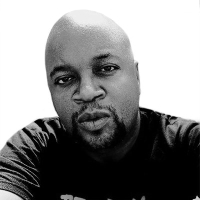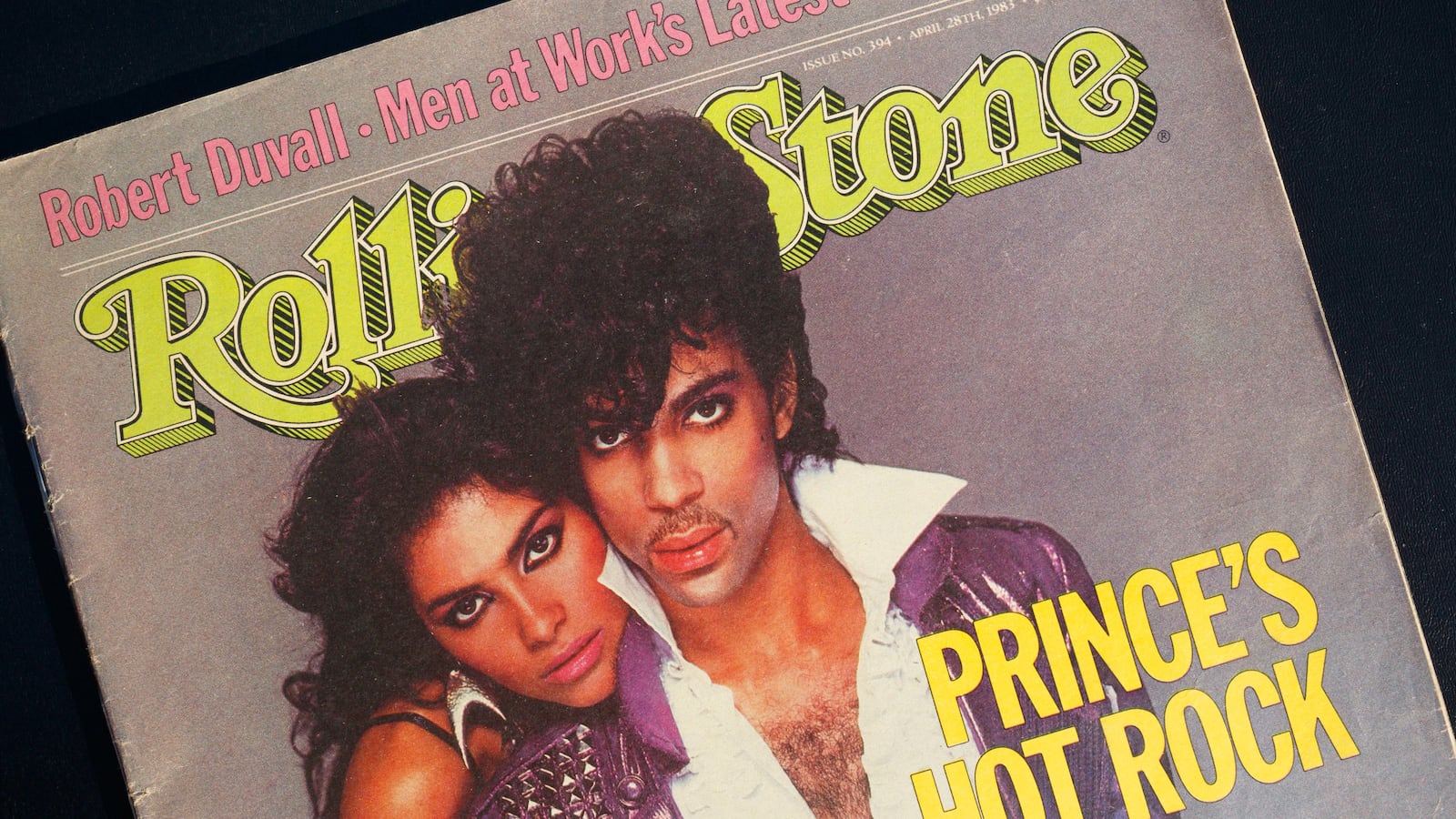“She was the most beautiful woman in the world and she had no problem letting you know that.”
That was what Prince shared about his former love and onetime protégé Vanity, born Denise Matthews, who died this week after battling kidney ailments for several years. She was a stunning former model who’d become a singer and actress in the 1980s, as well as one of many muses for His Royal Badness’s esoteric freakiness. For most Prince fans, Vanity is probably only second to Apollonia in the canon of “Prince girls,” but she was more than just an accessory to his legendary libido.
Matthews had grown up in Canada without her mother, who’d abandoned the family, and under the hand of an abusive father. She’d come to New York to pursue a career in modeling and music. First, she found herself on the arm of “Superfreak” funk legend Rick James, but after meeting The Purple One at the American Music Awards, Denise and Prince became an item.
It was Prince who christened her “Vanity” (after initially daring her to go by the much more provocative “Vagina”) before building the girl group Vanity 6 around her. This was early ‘80s, Dirty Mind-era Prince at his most sex-driven, so his new girl group was a hypersexual take on James’ own Mary Jane Girls, and they were given some of Prince’s most salacious songs—including the hit single “Nasty Girl.” The song would go on to influence later tracks from starlets like Kelis and Britney Spears; and it made stars of the group and of Vanity, who would become Prince’s muse for the next two years. She later said that the image Prince crafted for her made her uncomfortable and she felt coerced into it, but came to accept it. “I did it because [Prince] told me I had to do it,” she told Aldore Colier in a 1993 interview with Jet. “If I didn’t do it, I wouldn’t get paid. I got into it. I wanted the old Diana Ross image.”
After splitting from Vanity 6 and Prince prior to his leap into megastardom with Purple Rain (she was originally the film’s expected love interest, a role that eventually went to former Rams cheerleader and then-unknown TV actress Apollonia Kotero), Vanity signed with Motown. Her first solo album built on the sex kitten image she’d cultivated under Prince, but without his songwriting and production, the project underperformed. Nonetheless, she was cast as the female lead in a martial arts fantasy film from Motown Productions, 1985s The Last Dragon. Grossing under $26 million at the box office, The Last Dragon wasn’t exactly a hit, but the movie introduced Vanity as a prominent leading lady and would go on to become a celebrated slice of campy ‘80s cinema.
She would follow up her appearance in Dragon with another album for Motown, but outside of the moderate dance hit “Under the Influence,” Skin On Skin also underwhelmed, and aside from a song on the Action Jackson soundtrack, Vanity’s years as a pop star were behind her. She’d begun dating Motley Crue bassist Nikki Sixx that year and in 1987, they became engaged. The couple was heavy into ‘80s rock star excesses and enabled each others’ drug abuse. According to Sixx’s biography, the two were compulsive crack addicts. “I can’t believe I did freebase with Vanity all night,” Sixx writes in one anecdote. “I threw her out at about 8 a.m. She was getting crazy and telling me about God.” Sixx famously also had a near-death overdose in 1987, and in 1994, Vanity overdosed on crack cocaine. The experience almost killed her, profoundly affecting her health and forever changing her outlook. “My blood pressure was 250 over 190. I lost both kidneys,” she told Jet writer Margena Christian in 2007. “I had internal bleeding with blood clots on the brain. I was completely blind and deaf. I had a heart attack and a stroke."
The experience led to her religious conversion, as she said that she’d received a vision from Jesus as she lay dying. She said that God wanted her to metaphorically “kill” Vanity and she did, reportedly discarding every interview or recording of herself as the sexed-up pop star, distancing herself from the entertainment world, and going by her given name only: Denise Matthews.
She would marry former L.A. Rams player Anthony Smith the following year, who once playfully complained about his wife’s newfound zest for life and helping others.
“If I don’t watch out she will even hand out the furniture in our house. She is constantly giving out her number and offering meals and showers to people,” Smith said.
By 1996, the marriage was over—Smith is now serving three life sentences for the 1999 double-murder of brothers Ricky and Kevin Nettles and the 2001 death of Dennis Henderson—but Matthews’ convictions as a Christian had only grown. She would become an evangelist in the late ‘90s, speaking and writing about her faith, her past, and hoping to offer some clarity to other lost souls.
She would later write in her book about her time as Vanity: “With each new, methodical, despicable movement of my being, I closed my fists around a wretched lie which sought to eradicate my life at an impromptu time and I had built no stomach for the fight. With each new bitterness dispelled formulated by this cruel cold world of which I had become its strange kind, I shut my eyes and with deep complaint muttered words of death and despair, while the hot flames seeped, boiled and burned ablaze under my bottle. I was molding to the likes of mediocrity, vulnerability, having had all the experience of a trained seal, being pushed to the brink of hopelessness, and helpless to perpetuate a flawless, ruinous end.”
She admitted to Vibe in 2008 that it wasn’t easy to get people to forget Vanity.
“Getting past my past…was a process, a very serious process indeed. My God. As a person, [I’m] constantly changing, trying to be better. Back when I was Vanity, it was all about being sexy, getting slimmer, and getting cuter. Things have changed. Now it’s not the outward appearance, it’s the inward man that I’m trying to change. And that’s the message I bring to the people.”
The death of Denise Matthews was heartbreaking for anyone who grew up a fan of R&B and black pop culture in the 1980s. Granted, in her heyday, Vanity was a mainstream star with pop hits and movie and TV credits. But for me, as a black kid growing up heavily immersed in the uber-whiteness of John Hughes movies, with Heartland rock on MTV and under the gaze of President Ronald Reagan and his conservative-minded administration, seeing Vanity as Laura Charles in The Last Dragon was profoundly important.
Even if I only recognized that importance in hindsight.
We got The Last Dragon on VHS when I was a kid and I would watch it whenever it aired on channel 46, one of our local TV stations. When I think back, it was one of the few black films I had in my collection circa the mid-‘80s, alongside movies like The Goonies, the Star Wars films and the aforementioned John Hughes classics that featured white ‘80s teen stars like Molly Ringwald. I knew almost every word of that movie and was entranced by Vanity as Laura Charles. I’d obviously been too young to catch “Nasty Girl” and Vanity 6 at their height, so my strongest firsthand memories of Vanity are of her exchanging flirty glances with Bruce Leroy (Taimak) while coyly uttering phrases like, “You sure look like a master to me.”
She was perhaps my earliest on-screen crush, and it was rare for me to see beautiful black women presented as the desirable female lead in movies. Even on TV, I’d only seen Thelma from Good Times and Denise from The Cosby Show and a young Janet Jackson as Charlene on Diff’rent Strokes up to that point. I’d missed the years of Diahann Carroll and Pam Grier; as ‘80s kids, we were mostly exposed to the Ringwalds, Phoebe Cateses, and Kerri Greens, and only beginning to see Jennifer Beals and Rae Dawn Chong. Vanity was as glamorous and as gorgeous as any iconic beauty of that generation. And I was so enamored with her. I’m sure a lot of young boys that grew up around that time felt the same way. I’m sure a lot of us who grew up around that time felt the same way.
But Vanity wasn’t who Denise Matthews was in the last two decades of her life. Maybe she was never Vanity. Maybe the drugs and recklessness was how she helped Denise cope with Vanity. Regardless, what’s beautiful to anyone who loved her as a friend or as a fan is that she found her peace on her own terms and never looked back. She didn’t belong to us.
“I think it's important to understand the title of my book,” she told Vibe in 2008, when she was planning a follow-up to her autobiography Blame It On Vanity called The Black Box. “The black box is the only thing that survives a plane crash, and I want people to know that I’m a survivor. I go to wherever God calls me, wherever the church calls me to come to minister and preach the word of God. God told me, ‘Speak the kingdom of God with all your heart, mind, body, soul, and strength. . . seek the kingdom of God first.’ In the beginning I was planning on naming it Blame It On Vanity. . . Denise, but I wanted to separate myself from the sinful name that made me famous. ‘Vanity’ means worthlessness, and that’s the last thing I want to be known for. And I’m not worthless anymore. My name is Denise.”





